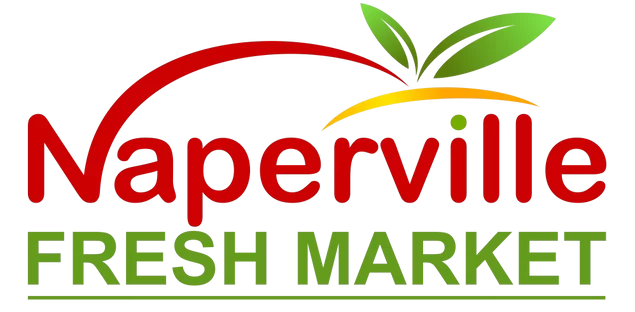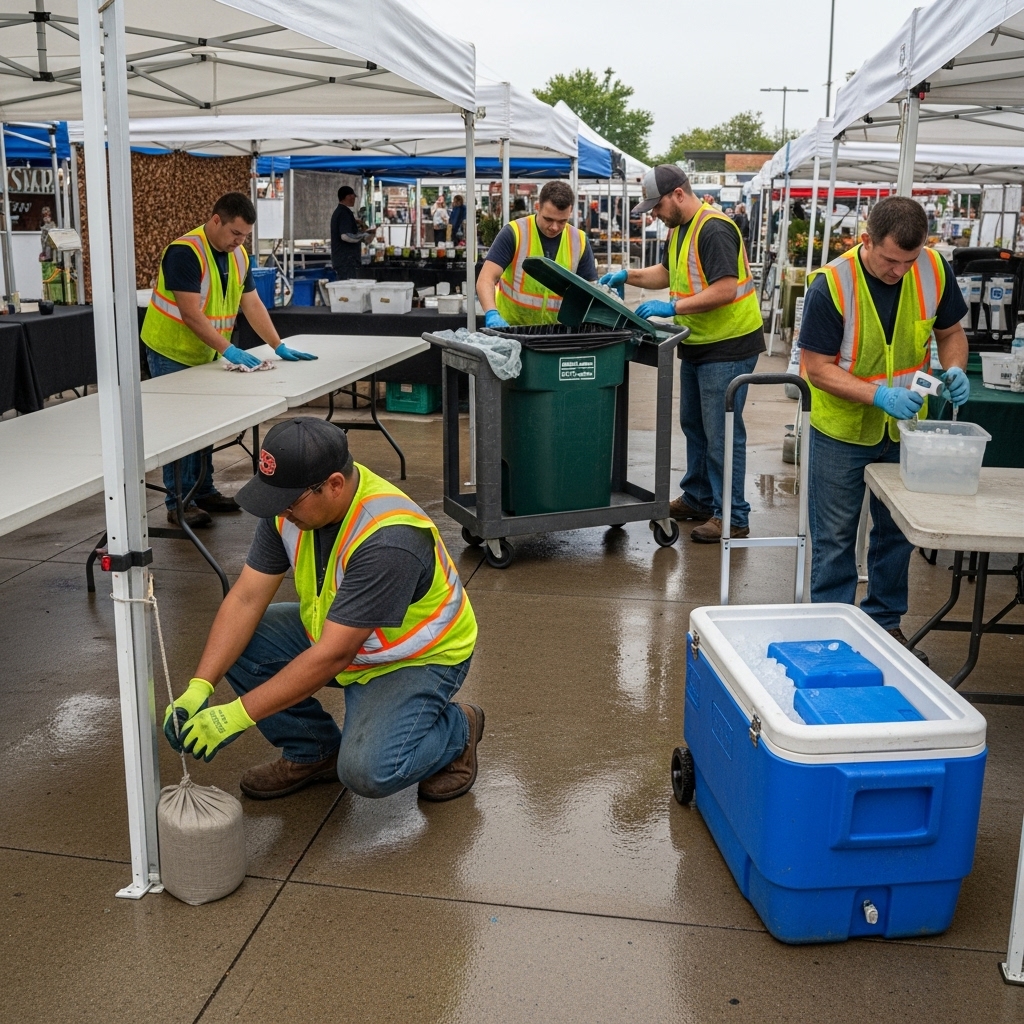Introduction: Maintaining a High-Performing Market
Operating a fresh market in Naperville, Illinois is not just about opening day; it is about sustaining quality, safety, and community trust week after week. A proactive maintenance plan keeps operations smooth, protects perishable goods, and enhances the visitor experience. As you design your program, align maintenance tasks with the actual goods you host—produce, baked items, dairy, eggs, or prepared foods—and visualize your rotation by reviewing representative market products so storage, display, and sanitation routines match the needs of each category.
This guide breaks maintenance into practical components: physical infrastructure, cold chain and food protection, sanitation, staffing and training, vendor relations, sustainability, and continuous improvement. Use it to build checklists that match your site and seasonal schedule.
Physical Infrastructure: Tents, Tables, and Traffic Flow
Reliable infrastructure prevents disruptions. Inspect tents and canopies regularly for tears, bent poles, and weak joints. Confirm that weights are sufficient for expected wind conditions and that tie-downs do not intrude into walkways. Tables should be stable, level, and easy to sanitize. If you use signage stands, ensure they are visible without creating trip hazards.
Revisit your layout mid-season. Crowd flow changes with vendor mix and weather. Widen aisles where congestion forms, add rest areas near food vendors, and place information booths where visibility is highest. Maintain clear emergency access lanes and mark them on your site map. If you operate indoors during cooler months, assess ventilation and update layouts to reduce bottlenecks.
Cold Chain and Food Protection
Maintenance for perishable goods is a daily discipline. Calibrate thermometers regularly and verify that coolers and refrigeration units maintain safe temperatures. Use dedicated containers for raw versus ready-to-eat foods to reduce cross-contamination risk. Train staff on quick checks: lids closed, ice replenished, and food elevated off the ground. Keep shade coverings in good repair to reduce heat load on displays.
Sampling protocols require special attention. Maintain stock of single-use utensils where appropriate, sanitizer, and handwashing setups. Dispose of samples within time limits and clean serving areas frequently. Document checks with simple logs so teams remember critical steps during busy periods.
Cleaning and Sanitation Routines
Create a cleaning schedule for opening, mid-shift, and closing. Assign responsibilities for wiping high-touch surfaces, sanitizing tables, and emptying waste and recycling bins. Store cleaning supplies in labeled containers and keep a secondary set for backup. For indoor locations, maintain floor care routines to minimize slip hazards, especially near entrances during wet weather. Ensure gray water disposal follows guidelines and does not create runoff or pooling.
Waste control affects the market’s look and feel. Provide visible bins with clear labels, service them before they overflow, and position them near seating areas and exits. Consider a compost stream if feasible and train staff on what belongs in each bin to minimize contamination.
Vendor Relations and Performance Management
Good maintenance depends on shared responsibility. Establish vendor guidelines that include display standards, labeling, and end-of-day cleanup expectations. Hold brief huddles before opening to review weather, safety notes, and special events. Mid-season, conduct quick audits to confirm that displays remain tidy, tents are properly weighted, and labeling is legible and accurate.
Encourage a feedback loop. Provide a consistent contact method for vendors to request repairs or report issues. Track requests so you can spot patterns—recurring electrical problems, canopy wear, or signage confusion—and address root causes instead of patching symptoms.
Staffing, Training, and Role Clarity
Maintenance succeeds when roles are clear. Define responsibilities for setup, sanitation, waste management, and customer support. Cross-train team members so absences do not create gaps. Provide quick-reference guides for key tasks like temperature checks, spill response, and incident reporting. Celebrate positive examples—clean, informative displays and smooth queue management—so teams know what “good” looks like.
Hold refresher sessions throughout the season. A short, focused training on labeling or cooler management can prevent bigger problems later. Incorporate real examples from your market to make training relevant and memorable.
Inventory Rotation and Display Care
Work with vendors on first-in, first-out rotation so older items are sold before newer stock is displayed. Keep produce out of direct sun where possible and rotate positions within the stall to maintain appeal. Use breathable containers for leafy greens and sturdy bins for heavier root vegetables. For baked goods and shelf-stable items, check packaging for integrity and readability of labels after handling.
Regularly assess display aesthetics. Clean signage, legible fonts, and clear product names make shopping easier. Avoid overcrowding tables; a curated, tidy presentation signals quality and makes it simpler to keep surfaces clean.
Safety Systems: Weather, Power, and Emergencies
Prepare for severe weather with a plan that includes monitoring, escalation thresholds, and communication protocols. Keep extra tent weights, repair kits, and protective covers on hand. Test electrical systems for weatherproofing and safe routing to avoid trip hazards. Maintain a first aid kit and post emergency contacts at your information booth. After any incident, conduct a brief review to capture lessons and update procedures.
Communication with Customers
Customer communication supports maintenance goals. Use clear signs for entrances, exits, and amenities. Provide simple guidelines for sampling and encourage respectful, efficient queueing. Share updates on seasonal highlights and any changes in layout that might affect traffic flow. The more customers understand the market’s rhythm, the smoother operations become.
Sustainability as a Maintenance Strategy
Sustainable practices reduce waste and improve efficiency. Encourage reusable bags and provide water refill points if feasible. Coordinate with vendors to minimize single-use packaging and to consolidate deliveries. Track waste volumes across streams so you can adjust bin placement or pickup frequency to match demand.
Mid-Season Tune-Up
Plan a mid-season review that brings together observations from staff, vendors, and customers. Update your maintenance plan based on what you learn: realign stalls to relieve congestion, add shade where displays run hot, and revise cleaning schedules to match foot traffic. This is also a good time to review recurring products so you tailor storage and display practices to the items most frequently sold.
Metrics and Continuous Improvement
Choose simple metrics that reflect maintenance success: on-time setup, temperature compliance rates, number of sanitation cycles completed, incident response times, and vendor satisfaction. Review these metrics weekly and celebrate wins to keep motivation high. When targets are missed, look for systemic causes—equipment issues, unclear roles, or layout constraints—and address them with specific actions.
Frequently Asked Questions
Q: How often should we calibrate thermometers? A: Build a schedule—such as weekly or biweekly—based on usage and risk level, and keep a log so you can verify accuracy during inspections.
Q: What is the best way to handle overflowing bins? A: Increase service frequency during peak hours, reposition bins near busy areas, and assign a staff member to monitor and respond quickly.
Q: How can we prevent tent damage on windy days? A: Use appropriate weights, secure tie-downs, and reduce canopy height if winds increase. Train staff to act before conditions worsen.
Q: How do we maintain label readability? A: Use weather-resistant materials, keep spare labels on hand, and check displays periodically for smudging or wear.
Q: What should be in our maintenance toolkit? A: Basic tools, extra tent weights, repair tape, cable covers, sanitizer, gloves, trash liners, and a small first aid kit.
Keep Your Market Thriving
Maintenance is an everyday practice that protects quality and elevates the customer experience. With clear roles, reliable equipment, and steady communication, your Naperville market can perform at a high level all season long.
Take the Next Step
Ready to refine your maintenance program? Walk your site with this guide in hand, update your checklists, and coordinate with vendors on display and sanitation standards. For inspiration as you tailor storage and rotation, preview a range of fresh market products and align your routines with what you sell most.




